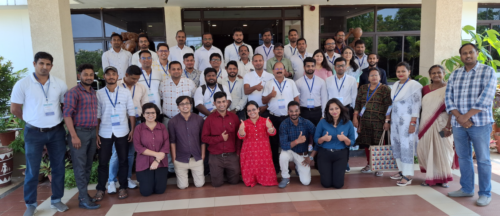Kategorie: PC
-

Create anytime, anywhere with OctoStudio
Reading Time: 5 minutesToday our friends Mitch Resnick and Natalie Rusk from MIT’s Lifelong Kindergarten group tell you about OctoStudio, their free mobile app for children to create with code. Find their companion article for teachers in the upcoming issue of Hello World magazine, out for free on Monday 1 July. When people see our…
-

Introducing a computing curriculum in Odisha
Reading Time: 5 minutesWe are working with two partner organisations in Odisha, India, to develop and roll out the IT & Coding Curriculum (Kaushali), a computing curriculum for government high schools. Last year we launched the first part of the curriculum and rolled out teacher training. Read on to find out what we have learned…
-

A teacher’s guide to teaching Experience AI lessons
Reading Time: 5 minutesToday, Laura James, Head of Computing and ICT at King Edward’s School in Bath, UK, shares how Experience AI has transformed how she teaches her students about artificial intelligence. This article will also appear in issue 24 of Hello World magazine, which will be available for free from 1 July and focuses…
-

Audiophile Pi
Reading Time: 3 minutesAs someone interested in giving old tech a new lease of life, the idea came naturally. “I was inspired by the many high quality network audio streaming devices sold by the major stereo component brands such as Sony, Cambridge Audio, NAD and so on but I couldn’t justify the cost,” he explains.…
-

Mini Dexed
Reading Time: 3 minutesMini Dexed ports the concepts of the digital synthesiser to Python and Raspberry Pi, and is the brainchild of Simon Peter (aka Probono), who describes it as a ‘Dexed FM synthesiser similar to 8x DX7 (TX816/TX802) running on a bare-metal Raspberry Pi (without a Linux kernel or operating system)’ to produce eight…
-

Young people receive their data from space and Astro Pi certificates
Reading Time: 4 minutesAcross Europe and beyond, teams of young people are receiving data from the International Space Station (ISS) this week. That’s because they participated in the annual European Astro Pi Challenge, the unique programme we deliver in collaboration with ESA Education to give kids the chance to write code that runs in space.…
-

NASsie
Reading Time: < 1 minuteWe got an email from Jeff Loeliger about a very cool project he’s been working on recently. “When you have several computers and lots of files around the house it is useful to have a NAS – network attached storage – device to share files, stream media with Plex, and back things…
-

Imagining students’ progression in the era of generative AI
Reading Time: 6 minutesGenerative artificial intelligence (AI) tools are becoming more easily accessible to learners and educators, and increasingly better at generating code solutions to programming tasks, code explanations, computing lesson plans, and other learning resources. This raises many questions for educators in terms of what and how we teach students about computing and AI,…








